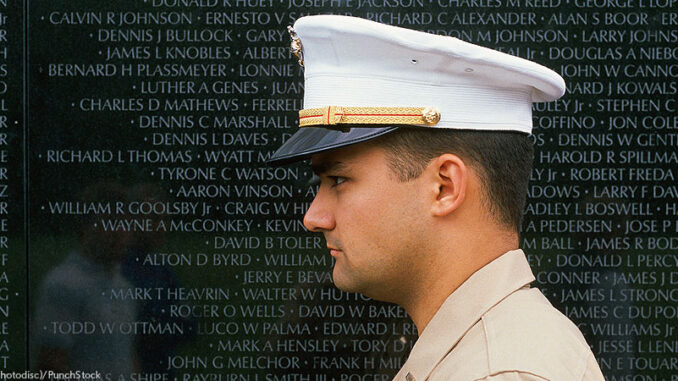
The end of war can be cause for celebration. The acknowledgement of victory and the joy of the thought of returning home to loved ones is cause to remember.
Edward George Honey, a World War I veteran and journalist living in London at that war’s end also believed it was cause for a respectful silence. He wished to commemorate the sacrifices made by those soldiers who gave so much to win the war. Edward George Honey wrote a letter to his local newspaper suggesting the country pause for “five little minutes” as a way to connect with those who lost their lives in the pursuit of bringing peace.
Later that same year, England’s King George V made an official proclamation that on the 11th hour of the 11th day of the 11th month, Great Britain should make a brief but complete “suspension of all normal activities” to remember the dead in perfect stillness. This specific date and time was chosen because it was when the fighting was temporarily ceased. (The official end of the war came when the Germans and the Allies signed the Treaty of Versailles the next year.) The very first Armistice Day was held at Buckingham Palace. Mr. Honey was among the invited guests.
Respect Comes with Many Names
November 11th has since become a day to honor all those who have served in the military. This day is recognized as a national holiday in the United States and Canada, and across Europe in the countries that fought as part of the Allies (including France, Italy, Romania, Russia, Serbia, Turkey, New Zealand, Belgium and Serbia.) In Europe and Canada, it is called Remembrance Day.

It also known as Poppy Day. In Northern France, there had been fields where the seeds of poppy flowers had stayed dormant (alive but not active) for many years. Because the earth had been disturbed and stirred up by the World War I fighting, the battlefields burst into poppy flower blooms. These flowers were the only plants to grow on those grounds. Many people saw this as a sign of both loss (the flower petals are red, the color of blood) and hope.
In the United States, Armistice Day was first observed in 1919, through the encouragement of President Woodrow Wilson. In 1938, the U.S. Congress passed legislation making November 11 a federal holiday. Following World War II and the Korean War, President Dwight Eisenhower signed legislation to change the name from Armistice Day to Veteran’s Day.
Events
All over the world, on November 11th, people commemorate their veterans with parades, concerts, and church services. In England, Queen Elizabeth II led the National Service of Remembrance at the Cenotaph in the city of Whitehall. A “cenotaph” is an empty tomb that acts as a monument for all of those who died in war.
In the United States, the U.S. president leads a service in Arlington National Cemetery at The Tomb of the Unknowns–our country’s equivalent memorial to its fallen soldiers killed in any war.
Veterans Day is sometimes mistaken for Memorial Day, which is held on the fourth Monday in May. Memorial Day pays tribute to those who died in war, while Veterans Day recognizes all veterans–living or dead–who served their country.
